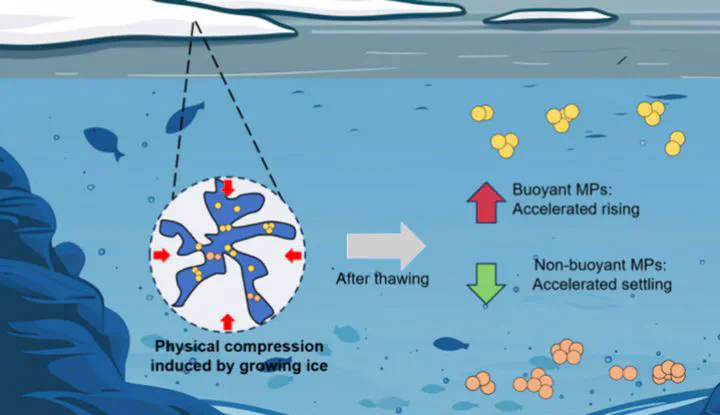Revealing the Freezing-Induced Alteration in Microplastic Behavior and Its Implication for the Microplastics Released from Seasonal Ice
Jul 20, 2024· ,,,,,,·
0 min read
,,,,,,·
0 min read
Zhikun Chen
Maria Elektorowicz
Chunjiang An
Xuelin Tian
Zheng Wang
Xiaohan Yang
Linxiang Lyu

Abstract
Ice can serve as a significant temporary repository and conveyance mechanism for microplastics (MPs). MPs present in the water column can become entrapped within developing ice formations, subsequently being sequestered and transported by ice floes. With changing temperatures, MPs stored in ice can be released back into the environment, while freezing conditions can alter the properties of MPs, ultimately affecting the fate of MPs in the environment. Freezing of MPs in freshwater ice results in the aggregation of MP particles due to physical compression, leading to an increase in particle size once the MPs are released from the ice. The freezing-induced aggregation enhances buoyancy effects, accelerating the settling/rising velocity of MPs in water. Additionally, freezing can lead to enhanced surface wetting alterations, thus improving the dispersion of hydrophobic MPs. The presence of salt in the water can mitigate the effect of freezing on MPs due to the formation of a brine network within the ice structure, which reduces the pressure on MPs entrapped by ice. In cold regions, numerous MPs undergo freezing and thawing, re-entering the water column.
Type
Publication
Environmental Science & Technology